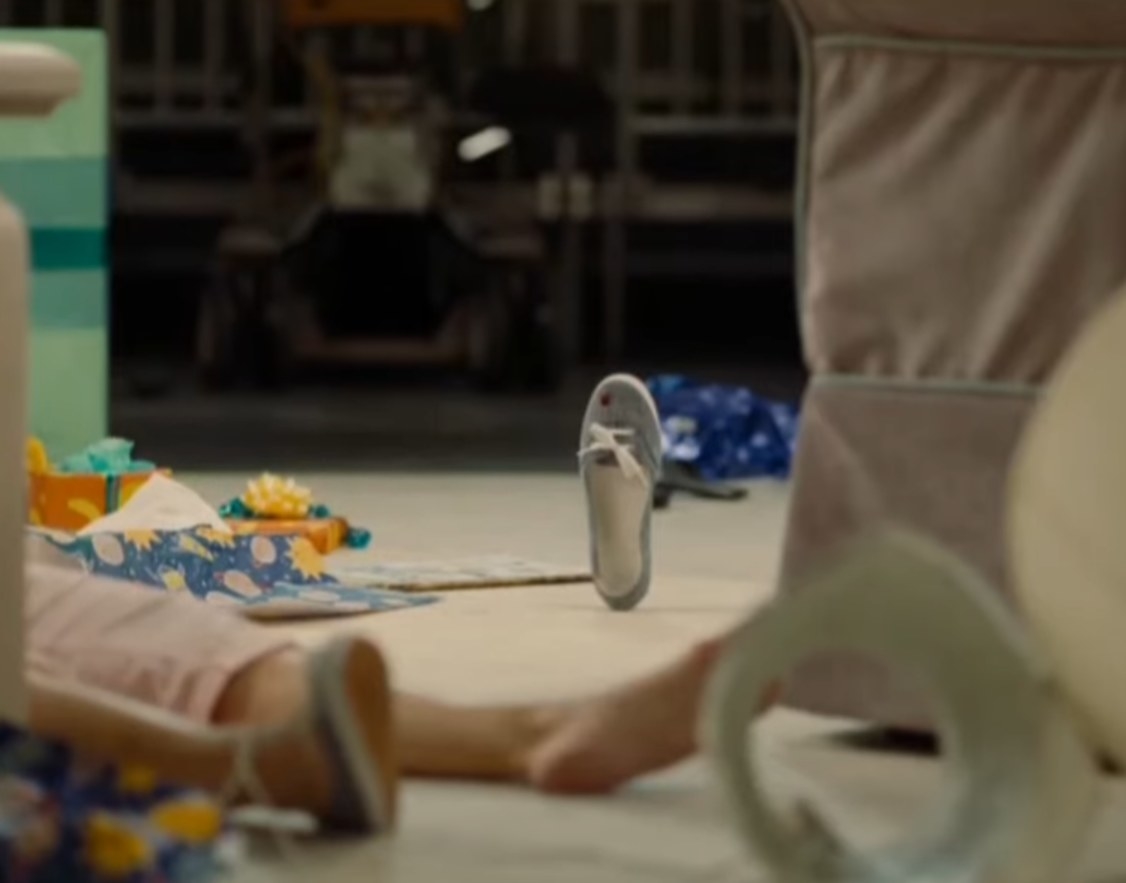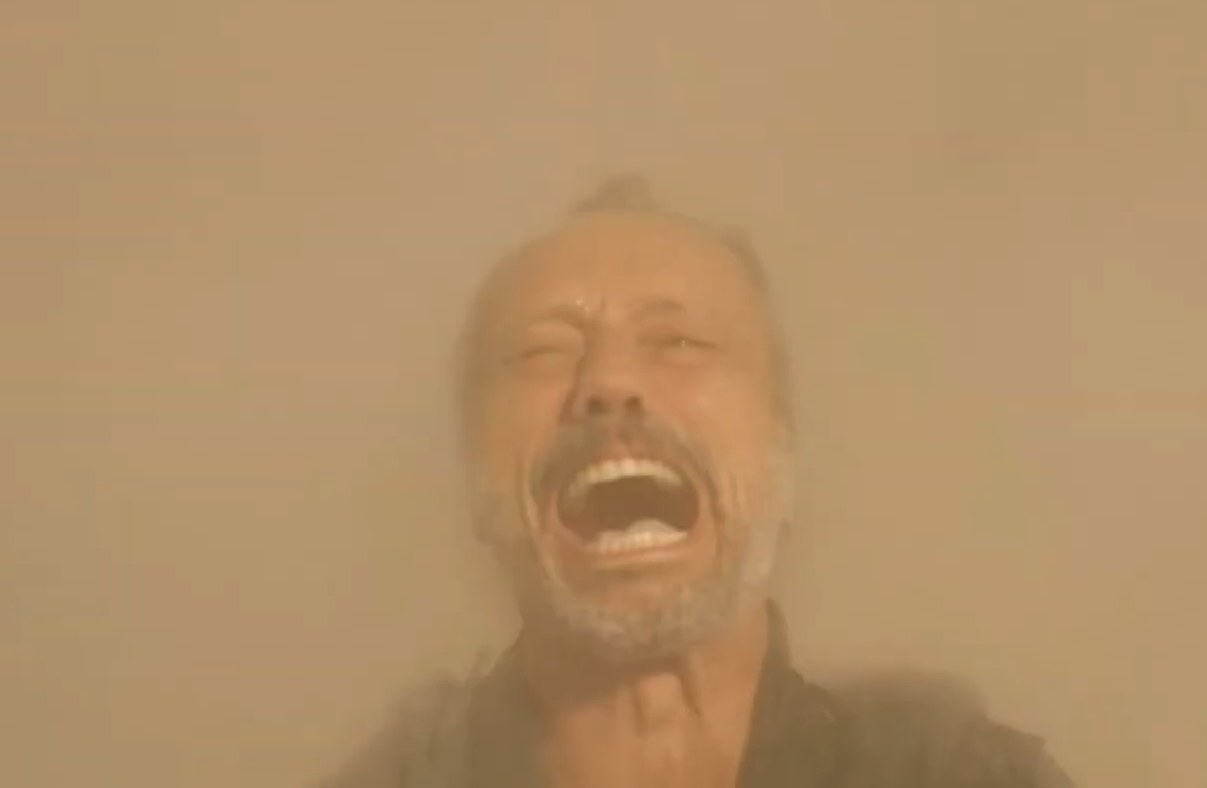The technique involves using one camera that shoots infrared light and another rolling 70mm film. A careful combination of the two images mimic how our eyes react to dark at night. It also means they don’t have to sacrifice all the prettiness that shooting on 70mm film gives them. Doron Gazit and Arieh Leon Dranger were members of Air Dimensional Design (AirDD), the team that brought Minshall’s designs to life. When Minshall went back to Trinidad, AirDD patented the design without Minshall knowing. What started out as a piece of artwork is now associated with cellphone stores and used car dealerships. Considering Peele’s previous sentiment on monetizing a bad spectacle, and Nope’s theme of Hollywood turning real things into cheap obsessions, it’s fitting that he chose this tube man to feature so prominently in the third act. Also — and this is pretty off-topic — these tube guys are genuinely used as scarecrows. A farmer named Gary Long who used them on his land reported that bird damage to his crop went from 20,000 pounds a year to nothing. They aren’t used as scarecrows in Nope, but it could be where Peele got the imagery from. At the trial, Muybridge pleaded insanity. Part of his reasoning (and that of his friends) was that he’d been in a stagecoach accident that had altered something in his brain, causing him to become unreasonably obsessed with photography. In Nope, Antlers isn’t in a stagecoach accident that we know of. But he does reflect on his obsession with getting the perfect shot. It’s likely not a coincidence that Peele wrote both Muybridge and Antlers into his script. Those who watched the Saturday Night Live skit about that rampage, the people in Ricky’s stands waiting for the alien, OJ, and Emerald — all could be called watchers. The interesting wrench that Peele throws into all this watching is that the alien can perceive being looked at. OJ discovers that avoiding “eye-contact” with the alien will keep it from killing you, and it’s the people who are hungry for a spectacle that are doomed. Is Peele just giving casual callbacks, or are his movies connected? Buck and the Preacher, a Western that was the first movie Sidney Poitier directed, is shown several times in Nope. The Scorpion King is also mentioned as OJ’s first job. The influence of several other movies can also be felt throughout Nope. Jaws is an obvious one, only because its monster-hunting formula is so tried-and-true. There’s also influence from movies like Creature from the Black Lagoon and Jurassic Park, which are monster movies that make you feel for the “monsters.” You quickly get the feeling that OJ can say in one word what Palmer’s Emerald would take a monologue to get across, but she’d be a lot more fun saying it. Still, it’s over two hours. If you left your first viewing feeling like there wasn’t much in the way of story, try focusing on the individual elements rather than the “this happens then this happens” plot of it all—individual elements like the tiny details below. And then there’s 6:13. Jupe says Gordy went on his rampage six minutes and 13 seconds into the Gordy’s Home! episode, and the alien arrives at Jupe’s ranch at 6:13 every Friday. The movie opens with a Bible passage, and some people have theorized that another passage, Romans 6:13, could be relevant: “And do not present your members as instruments of unrighteousness to sin, but present yourselves to God as being alive from the dead, and your members as instruments of righteousness to God.” There’s also the connection between Mary Jo Elliott (the scarred woman in Nope who survives Gordy’s beating) and Charla Nash. Nash is a real woman who, in 2009, was brutally attacked by a chimpanzee actor. Then you’ve got the fake-out in the opening credits, when a slow-push on the first ever motion picture (the man on the horse) makes you think you’re looking at the inside of a camera lens. Later, when we finally see the inside of the alien, we realize we were inside it, not a camera. And why horses? And why the man on the motorcycle? To me, any of Nope’s divisiveness comes from whether you find working out a riddle that has multiple answers fun or frustrating. And when OJ sees the alien over his truck and we wonder briefly if he might make a run for it, he just locks the door and waits it out as any sane person would. For example, you can watch Nope thinking about any of these themes and probably get a different experience each time: -Americans’ addiction to trauma or how people cope with trauma -Hollywood monetizing horrific events -Animal rights or the ethics of taming nature -Black representation and/or exploitation in film -Trying to attain the unattainable -The lengths one will go to to get rich The movie isn’t for everyone, that’s a given. But let’s say you really — I mean really hated Nope. Like, Logan Paul twitter rant levels of hate for this movie. Don’t try to rewatch it with the mindset that the movie has to convince you it’s good, because it probably won’t. Nope does things we don’t usually get to see in blockbuster movies, and Jordan Peele did that very intentionally. He said of the movie, “I wrote it in a time when we were a little bit worried about the future of cinema.” A lot of the criticism about Nope has been about plot and things making sense, but think about that first moving image of the man on his horse. Somewhere between that early footage and Nope, we decided that movies had to have certain things (a clear story, symbols, message). If Jordan Peele is challenging that decision, the audience’s frustrations with Nope might be part of his point. All of this is to say that there are movies made to entertain, and there’s the artsy shit. Jordan Peele is trying to do both, and that is, at the absolute bare minimum, worth a second viewing. Or don’t, Glass Onion also looks good.

